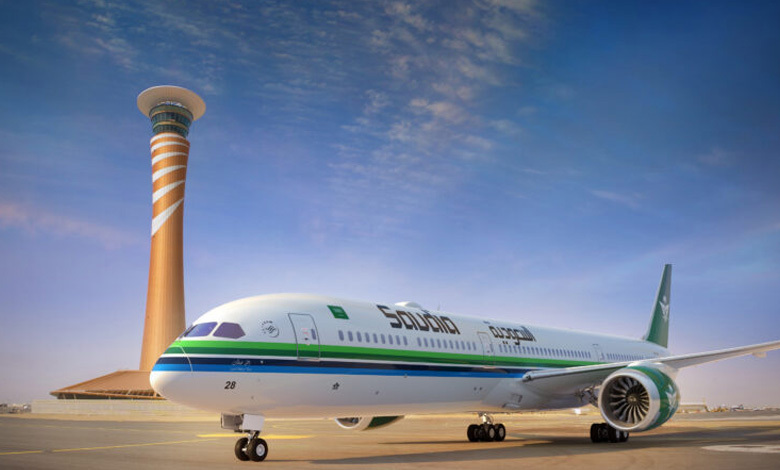Saudi Arabia has set its sights on becoming a major aviation hub worldwide, and the industry is taking notice of its audacious plans. The Saudi Aviation Master Plan 2020-2030 outlines the Kingdom’s vision, which is remarkably achievable despite being ambitious. With significant economic and social benefits, this aviation sector strategic roadmap aims to make Saudi Arabia a global powerhouse. In this piece, we examine Saudi Arabia’s goals for aviation, the main elements of its master plan, and the elements that contribute to the realization of this vision.
Launching with a Goal: Vision 2030!
With its vast oil reserves, Saudi Arabia is expanding its economy through the ambitious Vision 2030 initiative. A major component of this strategy, which aims to promote job creation and economic growth, is the aviation industry. The General Authority of Civil Aviation (GACA) unveiled the Saudi Aviation Master Plan 2020–2030, which forms the basis of these endeavors. It sees the Kingdom’s aviation industry as a major player on the international stage in addition to being a regional leader.
1. Growing Infrastructure and Airports:
The country’s airports will be expanded and modernized as part of the plan. In order to accommodate the growing volume of travelers and cargo, Saudi Arabia will make significant investments in expanding and modernizing its airport infrastructure. The objective is to improve passenger satisfaction, increase productivity, and handle an increasing volume of passengers.
2. Services for Air Navigation:
To guarantee the safe and effective movement of aircraft, the master plan is centered on improving air navigation services. Saudi Arabia hopes to minimize emissions and fuel consumption by streamlining flight routes and optimizing its airspace through the use of cutting-edge technologies and systems.
3. Fostering Regional Talent:
The aviation industry needs a skilled labor force to succeed. In order to develop local talent in aviation-related fields, Saudi Arabia will invest in education and training for pilots, air traffic controllers, maintenance staff, and technical personnel.
4. Attracting International Investments:
Saudi Arabia is eager to draw international partnerships and investments in order to meet its aviation goals. The Kingdom understands that working together with well-established aviation players will help it advance faster and acquire more knowledge and experience.
5. Encouraging Travel:
Travel and aviation go hand in hand. Saudi Arabia wants to encourage tourism and leisure travel by providing easy access, fresh locations, and a wide variety of attractions for visitors from both abroad and domestically.
The following important elements support Saudi Arabia’s aviation ambitions and make its vision actually attainable:
1. Location Technique:
Saudi Arabia’s geographic location at the intersection of three continents makes it a prime destination for aviation. It can be a vital hub for people traveling between Europe, Africa, and Asia. The aviation industry in the Kingdom has a solid foundation thanks to this strategic advantage.
2. Solid Government Assistance:
The Saudi government remains steadfast in its support of the aviation master plan and Vision 2030. Significant investments and regulatory changes are being implemented to facilitate the expansion of this industry.
3. Diversification of the Economy:
Saudi Arabia is attempting to diversify and is lessening its reliance on income from oil and gas. These objectives are perfectly aligned with the aviation sector, given its enormous potential for economic growth.
4. Contemporary Facilities:
The Kingdom of Saudi Arabia has already made great strides towards building top-notch airport infrastructure. Major renovations and upgrades have been made to airports such as King Abdulaziz International Airport in Jeddah and King Khalid International Airport in Riyadh.
5. Explosion Tourism:
Saudi Arabia is now granting tourist visas to travelers from all over the world, signaling the growth of the country’s tourism sector. There will likely be a significant demand for air travel as a result of this tourism boom, which will benefit the aviation industry.
6. International Collaboration:
Saudi Arabia can gain knowledge transfer and access to their expertise by interacting with global aviation players. This cooperative strategy will guarantee that the Kingdom follows global best practices and standards while also accelerating progress.
Saudi Arabia’s push into aviation is a global declaration of intent rather than just a domestic endeavor. With a clear roadmap, strategic investments, and resolute government support, the Kingdom’s aviation dream seems set for success.
Read More: Oman Seeks India’s Expertise for Advancing Space Program






















